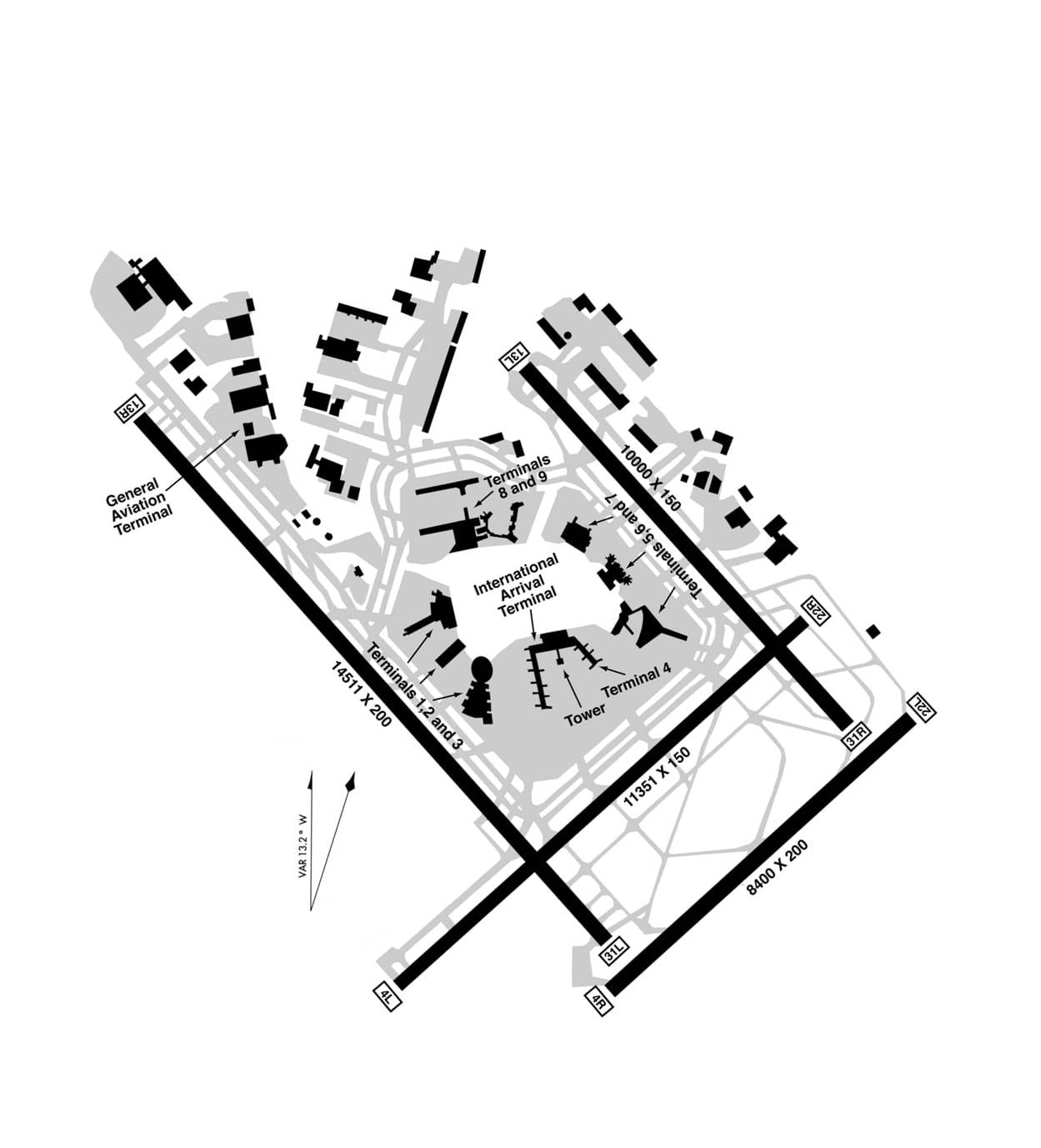[Avionics Today June 26, 2014] Researchers at the National Aeronautics and Space Administration (NASA) and aerospace and defense company Saab have a new agreement in place to research the use of 4-D trajectory solutions to help reduce the highly congested New York airspace. According to Doug Sweet, director of Air Traffic Management (ATM) at Saab, 4-D trajectory solutions involve “planning and execution of precise flight trajectories by specifying de-conflicted, four-dimensional paths (three spatial dimensions, plus time).”

New York’s John F. Kennedy (JFK) Airport is the sixth busiest airport in North America, and part of the busiest airport system in the United States. Photo, courtesy of FAA.
“The FAA is moving to implement Trajectory Based Operations (TBO) that will shift from clearance-based to trajectory-based control. This will provide the mechanism for all users to better understand the future state of aircraft and to be more proactive in planning and executing each flight,” said Sweet.
Future benefits of 4-D trajectory solutions include fuel savings, increased and shared situational awareness, and reduction in flight delays, Sweet said.
While the project is not currently directly included in the FAA’s NextGen efforts with modernizing ATM in the New York metroplex, if the research proves beneficial, it could greatly help the FAA’s efforts there.
“It is important to note that this research is in the early stages of development and is not currently included in the FAA NextGen plan,” said Sweet. “This work develops and assesses the merits of a potentially revolutionary approach for optimizing flight trajectories across the airport surface and terminal airspace in the presence of uncertainties. Thereby, it supports the FAA NextGen goal of enabling integrated arrival-departure planning.”
Once the project gets underway, if it proves beneficial that will open up more collaboration with pilots and Air Traffic Controllers among other stakeholders to start using 4-D. This type of collaboration is what allowed for the completion of the Houston metroplex project, according to James Davis, national airspace representative for the National Air Traffic Controllers Association (NATCA).
“The level of collaboration between pilots, controllers, flight procedures designers and the FAA is what allowed us to complete the Houston metroplex project,” said Davis. “While that 4-D concept is still in its early stages, it will require that type of collaboration to deploy it, if it proves viable.”
Saab and its partner NextGen Aerosciencies (NGA) are targeting four specific airports in the New York area: John F. Kennedy International Airport (JFK), La Guardia International Airport (LGA), Newark Liberty International Airport (EWR), and Teterboro Airport (TEB). New York has one of the busiest airspaces in the world. JFK for example, is the sixth busiest airport in North America in terms of passenger traffic, with landings and take-offs increasing by 1.2 percent to 406,419 in 2013 and projected to increase even more in the future. If the 4-D concept proves viable, it can definitely help controllers keep up with the air traffic volume that the legacy radar based system simply cannot keep pace with.
Ken Kaminski, general manager of Saab ATM, said the biggest differences between 4-D and other ATM efficiency solutions is that instead of focusing on one phase of flight, such as the surface, this research project is “integrating two different techniques to determine their ability to paint a more accurate, holistic picture of the effect of new operational procedures on the entire flight path.”